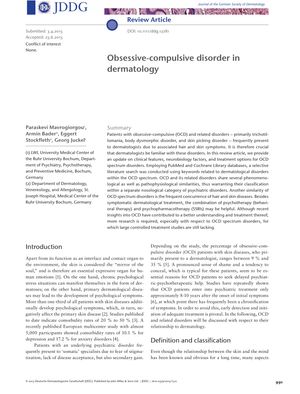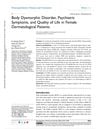Obsessive-Compulsive Disorder in Dermatology
September 2015
in “
Journal der Deutschen Dermatologischen Gesellschaft
”

TLDR Skin doctors should recognize and treat conditions like hair-pulling and skin-picking early, often using therapy and medication, to help 50-70% of patients.
The 2015 document highlights the intersection of dermatology and psychiatry in the treatment of OCD spectrum disorders, including trichotillomania, dermatillomania, and body dysmorphic disorder. It underscores the need for dermatologists to recognize these conditions, which often present with skin and hair symptoms, and to provide early treatment to prevent chronicity. The paper suggests a combination of psychotherapy and psychopharmacotherapy, particularly SSRIs and behavioral therapy, as effective treatments, with improvement seen in 50-70% of patients. Trichotillomania, characterized by compulsive hair pulling, has a lifetime prevalence of 0.6-4% and can be treated with serotonergic psychopharmaceuticals and minoxidil 2% to promote hair growth. The document calls for interdisciplinary cooperation for patient care and more extensive research due to the small number of cases in many studies. It also describes the psychopathology of OCD, including compulsive washing leading to skin conditions and the role of neurotransmitter imbalances, particularly serotonin.
